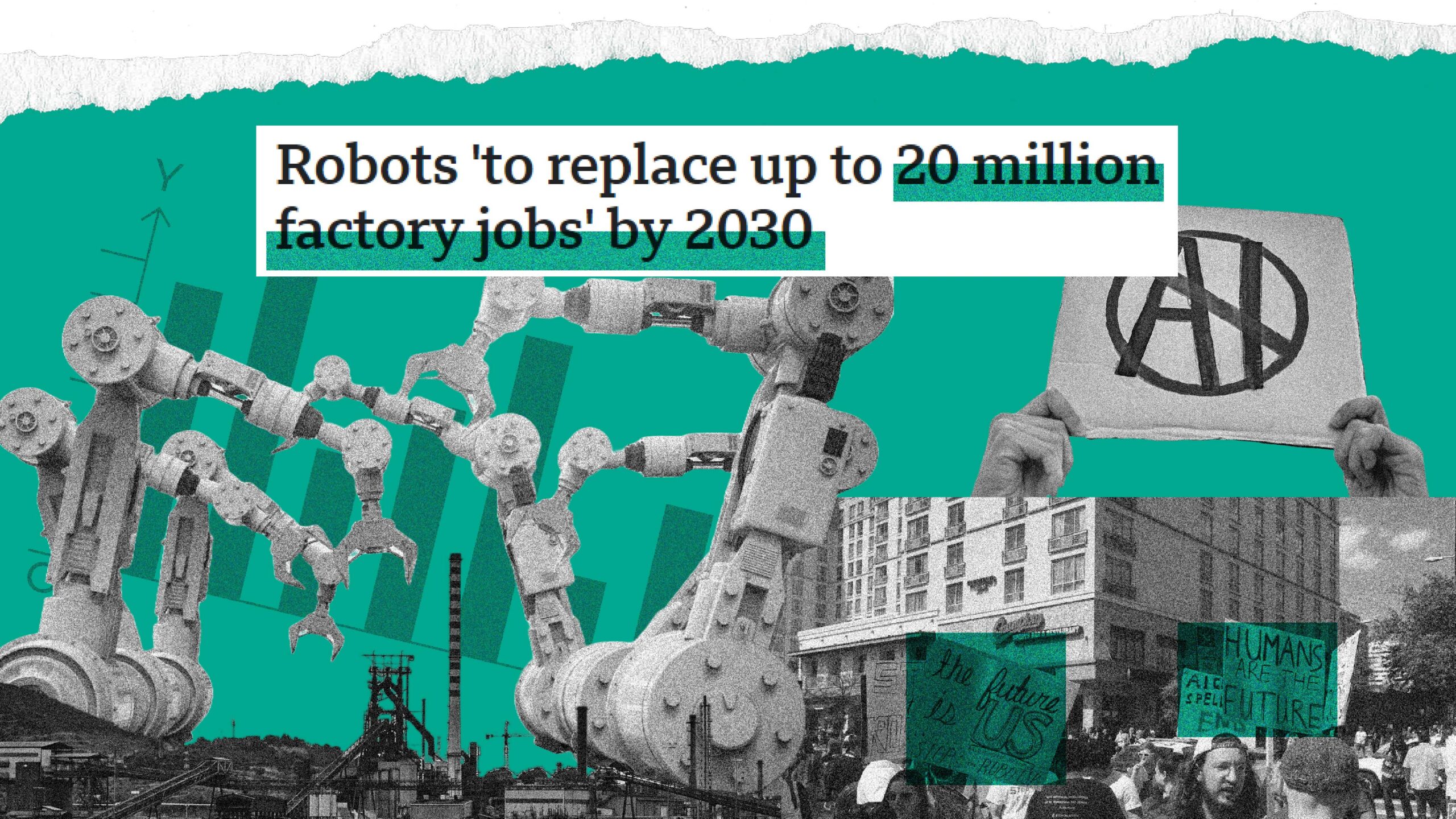- By Muhammad Hamza Bilal
HOW IS AI REPLACING JOBS IN THE FUTURE REVOLUTION?
By Muhammad Hamza Bilal

By Muhammad Hamza Bilal
Artificial intelligence is more than just a tech trend—it’s a force that’s transforming how we work and live. Imagine a world where machines take on tasks that humans used to handle, making processes faster and more efficient. This change is happening all around us, and it’s shaking up industries in ways we’ve never seen before. But with all this excitement comes a set of challenges, especially for countries like Pakistan. To navigate this shift and get ready for what’s next, we need to understand how AI is impacting jobs.
So, what exactly is Artificial Intelligence?
Think of it as machines or software that can learn, think, solve problems, understand what they see and hear, and even comprehend language—things we usually associate with human intelligence. It includes machine learning, which deals with huge amounts of data, and robotic process automation (RPA), which handles repetitive tasks more efficiently than any person could.
In Pakistan, where many jobs still rely on manual labor and traditional methods, It is a double-edged sword. On the positive side, it can boost productivity and spark new ideas across various industries. But it also raises concerns about job displacement, particularly in areas where machines can easily take over human tasks.
To make the most of this AI revolution, we need to prepare. That means upskilling workers, embracing new technologies, and creating policies that support both innovation and job security. By doing this, Pakistan can ride the wave of its advancements while also protecting its workforce. The world of work is changing rapidly, and with the right approach, we can ensure that these changes benefit everyone.
Jobs involving repetitive, routine tasks like data entry, assembly line work, and basic customer service are highly susceptible to automation. AI algorithms can rapidly analyze complex data sets, impacting roles in finance, healthcare, and marketing. Additionally, its systems enhance decision-making processes by providing data-driven insights and influencing managerial and strategic planning positions.
AI job losses are rising, but the numbers don’t tell the full story (CNBC, 2024)
In Pakistan, the banking industry is undergoing a significant transition as a result of AI. Banks have begun adopting AI for secure digital identification systems, biometric verification, and improved fraud detection techniques.
Agriculture, a critical sector in Pakistan, is also witnessing AI integration. In Pakistan, AI innovation is expanding in agriculture, with businesses such as Bakhabbar Kissan and FasalPay leading the charge. Data fragmentation, a lack of standards, and limited infrastructure, particularly in rural regions, are major difficulties. Despite these difficulties, the youth population and local colleges have enormous potential for creating AI talent. Improving stakeholder cooperation, standardizing data, and resolving regulatory loopholes are all critical steps toward properly leveraging AI. However, solutions must prioritize privacy and security in order to reduce the hazards linked with AI.
Manufacturing Pakistan’s textile industry, a major employment sector, is gradually integrating AI and robotics. Automated sewing machines and AI-driven quality control systems are becoming common. This transition improves production speed and consistency but also reduces the demand for manual labor.
In the age of AI, education, and skill development are more crucial than ever. To keep up with the rapid advancements, it’s all about learning new skills, retraining, and partnering with industry leaders. Think of it as gearing up for a future where the ability to adapt is your greatest asset.
So, what does this look like in practice? Imagine diving into programs that focus on digital literacy, coding, data analysis, and machine learning. These aren’t just buzzwords—they’re the building blocks of tomorrow’s job market. Whether you’re a student, a mid-career professional, or someone looking to switch fields, getting comfortable with these skills is key.
Reskilling projects are particularly important for those whose jobs are at high risk of being automated. Picture a factory worker learning to program AI systems or an office clerk mastering data analysis—these new skills can open doors to roles that AI can’t easily take over. It’s about transforming potential job losses into new career opportunities.
But it’s not just about individuals learning on their own. The magic happens when educational institutions and tech companies join forces. Imagine universities and tech giants creating personalized training programs that are both cutting-edge and practical. These partnerships can provide the latest knowledge and hands-on experience needed to succeed in a tech-driven world.
By focusing on continuous learning and fostering collaboration between the public and private sectors, we can ensure that everyone is ready to thrive in an AI-powered future. It’s about bridging the gap between where we are now and the exciting possibilities ahead.
AI is rapidly transforming the workforce, with some jobs more vulnerable to automation than others. Understanding which roles are susceptible to AI is crucial for preparing for future changes.
Data Input Clerks:
AI minimizes errors and enhances reliability by recognizing patterns.
Customer Service:
AI-powered chatbots and virtual assistants efficiently handle large volumes of queries with quick, 24/7 responses, improving customer satisfaction.
Production Line Workers:
Robots perform repetitive tasks with precision, boosting productivity and reducing operational costs.
Telemarketers:
AI-powered automated dialing systems and voice recognition technology manage calls and consumer interactions more effectively.
Cashiers:
AI-powered self-checkout systems and mobile payment technologies streamline operations, reducing the need for human cashiers.
Bank Tellers:
Automated teller machines (ATMs), internet banking services, and AI-powered customer care handle mundane tasks and queries, decreasing the workload.
Market Analysts:
Machine learning algorithms analyze data, identify patterns, and predict market behavior faster than human analysts.
These advancements illustrate AI’s widespread impact on traditional job responsibilities across various sectors.
“The automation of factories has already decimated jobs in traditional manufacturing, and the rise of artificial intelligence is likely to extend this job destruction deep into the middle classes, with only the most caring, creative, or supervisory roles remaining.”
(Stephen Hawking, Theoretical Physicist)

